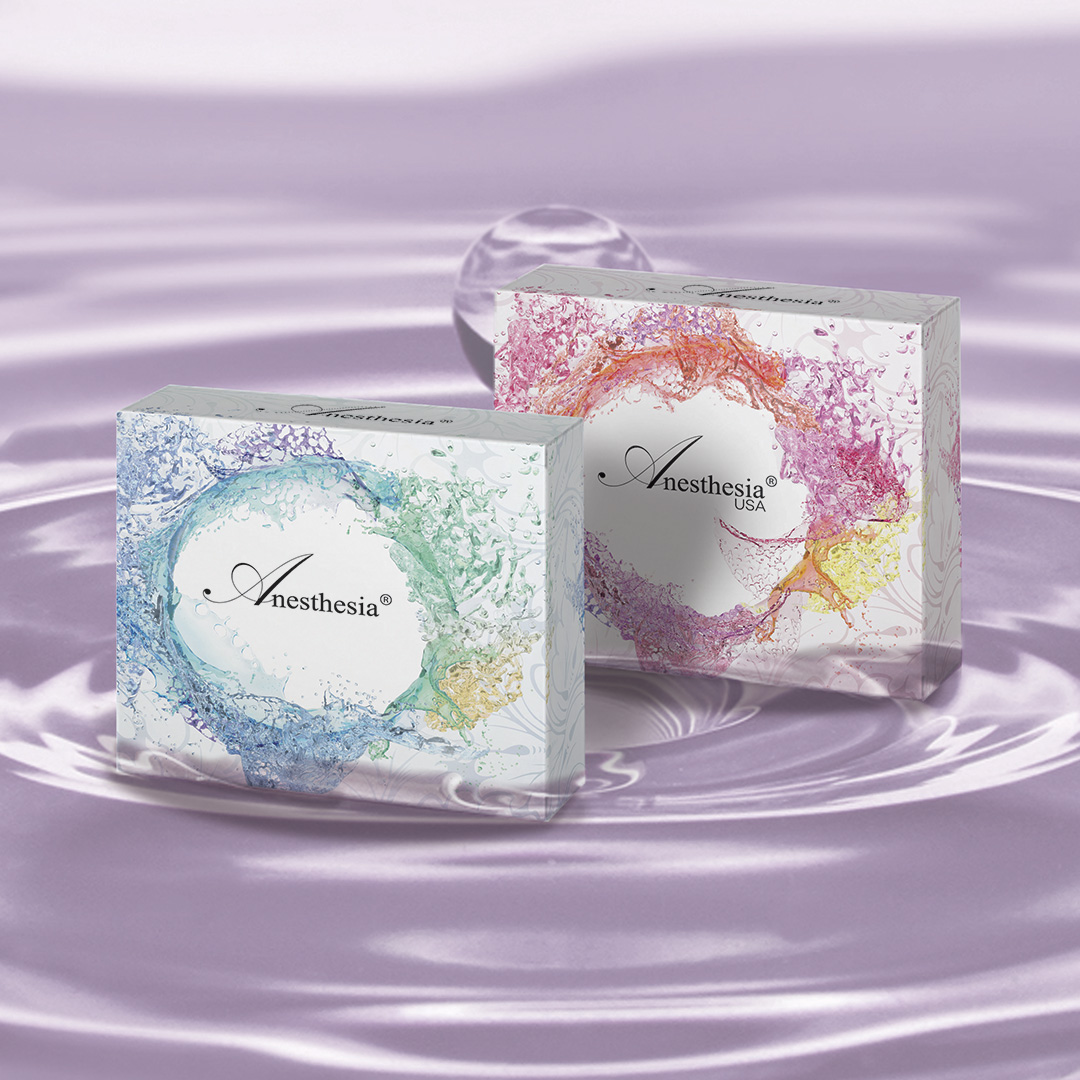9 Colored Contacts Tips From Anesthesia Before You Buy Your First Pair Of Colored Contact Lenses

You’ve been thinking about wearing colored contact lenses for some time but don’t know where to start. Well, Anesthesia has nine colored contacts tips to help you with safety, comfort, and lens care before you go buy your first pair of colored contact lenses.
First off, colored contact lenses, even without refractive power, are considered medical device. That’s why they require FDA approval. That said, buying them should be approached seriously.
So, tip #1: you start by visiting your eye doctor, who will help you choose the right lenses for your eyes.
Because your eye shape is unique, the front surface of your eye (cornea) may be steeper (a lower base curve number) or flatter (a higher base curve number). If the lens doesn’t sit well on your eye, it may cause discomfort, oxygen deprivation, or even eye infection, which is why base curve measurement is essential for lens fitting. You need a prescription to get the best fit for your eye and power indicated if necessary.
When you start wearing colored contact lenses, your tip #2 is to wear them for a short time or as long as your doctor recommends, increasing the wear time gradually.
Why is this?
Soft contact lenses on the market are made of different materials, such as hydrogel and silicone hydrogel. They differ in how much oxygen the lens material allows to pass to your eye and how hydrating and comfortable the lens material feels on your eye. Thus, lens breathability and hydrating properties vary depending on the material used and lens type.
Oxygen transmissibility and water content are important specifications when choosing contact lenses. The Dk/t value represents the oxygen permeability (Dk) in relation to the material thickness measured at the contact lens's center (CT = center thickness). The higher the DK/t ranking, the more oxygen gets to your eye. And (although counterintuitively), the lower the water content, the longer the lens stays hydrating. So, if your eyes are dry, you want to choose a low water content lens, which is anything below 40.
Neither modern lens material outperformed the other in terms of comfort during testing. Both had a low incidence of contact lens-related problems and complications. But if you’re new to wearing contacts, starting with two hours per day and building up from there rather than starting full-time immediately is recommended.
There is no such thing as a one-size-fits-all contact lens. Because each eye is different, don't be dazzled by the highest Dk/t value or the lowest water content. Some eyes can tolerate lower levels of oxygen, while others can tolerate lower levels of water. You (and your eye doctor) decide which option is best for your eyes.
Tip #3 is to learn how to properly insert and remove your colored contact lenses.
The hardest challenge about wearing any contact lenses is, again, learning how to put them in and take them out safely. The best option is, of course, to ask your eye doctor or a local clinic so that somebody walk you through the proper steps in person. Do not skip learning to handle your lenses to avoid damaging or scarring your eyes.
Unless you’re wearing Anesthesia lenses, tip #4 is to keep a bottle of re-wetting drops handy.
Do not expect each and every colored contact lens to be super comfortable throughout the day. That has to do with both lens design and the quality of the lens plastic. To improve your comfort, consider having a bottle of artificial tears approved for contact lenses. Also, and this is super important, at any time, if your eyes become red, irritated, or painful, take out your colored contact lenses immediately. If your eyes aren’t feeling better, give your eye doctor a call.
Tip #5 is to always appropriately clean and store your colored contact lenses (unless you wear single-use contact lenses).
Contact lenses need to be appropriately cleaned and disinfected. Be sure to use an approved multi-purpose disinfectant solution, and never ever, under any circumstance, use regular water or just any saline solution. Some of the absolute worst contact lens infections you can get come from using water with contact lenses. If you are storing away your colored contact lenses for several weeks to months, read the back label of the disinfectant solution because it often tells you how frequently that specific solution needs to be replaced.
Generally, most multi-purpose solutions have to be replaced every 30 days. At the same time, keep in mind the expiration date of your colored contact lenses – because, depending on the brand and type, it could be one day, one month, or even one year. Here’s a pro tip: when cleaning the lenses, make sure to rub them a little bit with the solution because that will help break up any bacteria and lipids that may be deposited onto the surface of your lens.
Tip #6 is: do not use dried-out colored contact lenses or old lenses that have dried up at the bottom of a case.
Do not try to re-wet them. If you try to use those lenses, you’ll likely end up scratching and hurting your eye. Here’s another reminder to care for your eyes and colored contacts.
Tip #7 is to never sleep in your colored contacts!
At the time of writing this blog post, there are no colored contact lenses on the market that has been tested and approved for sleeping overnight. The truth is that the risk of permanent vision loss, corneal transplants, and just the cost of having to come and see your local eye doctor multiple times and use the medications because of a nasty infection, plus pain and potentially lost work, is not worth it.
Tip #8 is to NEVER EVER (EVER!) share your colored contact lenses with anyone!
Cleaning the lenses with the solution doesn’t guarantee you’re safe from contracting an eye infection. Keep your beautiful eyes safe and healthy.
Last but not least, tip #9 is to buy your colored contacts from a credible and reputable source.
If you go online and type in anything like buy colored contact lenses or buy cosmetic contact lenses, chances are you’re going to see a plethora of websites selling colored contacts for a ridiculously low price. Unfortunately, many of them repackage contact lenses contaminating them in the process with germs and other sorts of foreign matter and dirt. Moreover, online contact lens scammers may send you something other than what was actually prescribed. That’s why it’s crucial to know your most recent prescription, if applicable, and double-check the lens information indicated on the packaging when you receive your order.
Share this blog post with your friends if you found it helpful. And see you in the next one!


